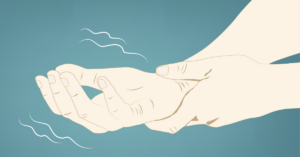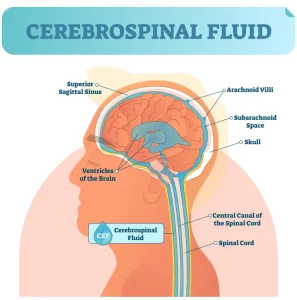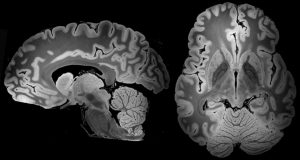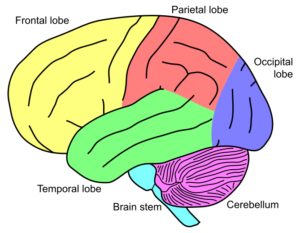
Snapshot: What is Tremor?
If you’ve ever felt shaky when speaking in public or after drinking too much coffee, then you’ve likely experienced tremor. Tremor is an involuntary, rhythmic shaking of parts of the Read More…
Bill Nye is back in his lab with NAF and Biogen—breaking down the science of Friedreich Ataxia in a new video series. WATCH NOW
A collection of resources for individuals and families affected by Paraneoplastic Cerebellar Degeneration.
Paraneoplastic Cerebellar Degeneration, also known as Paraneoplastic Cerebellar Ataxia, causes difficulties with balance and coordination. This condition is called ataxia. Ataxia caused by Paraneoplastic Cerebellar Degeneration is an acquired form of ataxia, meaning that the ataxia symptoms are the result of an injury or illness.
For complete information about symptoms, diagnosis, and treatment of Ataxia, visit our What is Ataxia? page. This page contains NAF’s resources that are specific to Ataxia caused by Paraneoplastic Cerebellar Degeneration.
Sign up for our mailing list to stay up-to-date on Ataxia news.
Presented by Justin Abbatemarco, MD and Elizabeth Page, MD
This webinar gives an overview of the causes and symptoms of Paraneoplastic Cerebellar Degeneration, the typical diagnostic journey for those affected, what to expect for clinical care, and an overview of current research into the disease.
NAF offers webinars on many topics to help you live better with Ataxia. Visit www.ataxia.org/webinars to find other helpful presentations.
Participating in a research study or clinical trial is one way to take an active role in furthering understanding and treatment of Ataxia. It is also a way to get access to new treatment options before they are widely available. To find studies that are enrolling patients, visit our Help Develop New Treatments page.
Paraneoplastic syndromes are disorders that occur when someone has cancer. The symptoms experienced are not caused directly by the cancer itself. Instead, they occur when someone’s immune system releases antibodies to destroy the tumor. While trying to get rid of the cancer, the antibodies accidentally damage healthy cells, too. This is what causes paraneoplastic symptoms.
Often, paraneoplastic symptoms can be the first sign that someone has cancer. Depending on what type of health cells are damaged, symptoms will differ. The most common paraneoplastic syndromes involve your nervous system, endocrine system (hormones), bones, joints, blood, and skin.
If someone’s cerebellum is damaged due to paraneoplastic antibodies, they can develop Paraneoplastic Cerebellar Degeneration. This is a type of acquired ataxia, meaning that the ataxia symptoms are the result of an injury or illness. Paraneoplastic Cerebellar Degeneration is very rare. Less than 1% of cancer patients will develop Paraneoplastic Cerebellar Degeneration.
Paraneoplastic Cerebellar Degeneration usually begins with mild symptoms, with some problems with balance, coordination, double vision, and fine motor skills. Over the course of weeks or months, these symptoms get worse over time. In rare cases, there can be a rapid progression of symptoms over the course of a few days. Sometimes, people with Paraneoplastic Cerebellar Degeneration will experience nausea, vomiting, dizziness, and other flu-like symptoms before their balance and coordination worsen.
Less common symptoms include repetitive and uncontrolled eye movements, tremors, difficulty speaking, or difficulty swallowing.
Early diagnosis is critical for Paraneoplastic Cerebellar Degeneration. Once someone is diagnosed, they can begin treatment for the underlying cancer causing their symptoms. This can also include immunotherapy to minimize antibody damage to their cerebellum. The goal is to stop the progression of damage to the cerebellum as quickly as possible, while recovery is still possible. After a certain point, the antibodies will have done significant damage to the brain. Treatment after this amount of damage will prevent ataxia symptoms from worsening, but may not show much improvement.
Thus, the prognosis for people with Paraneoplastic Cerebellar Degeneration varies depending on how quickly they receive treatment. Some potential outcomes include full recovery, partial recovery, stabilization of ataxia symptoms, progressive ataxia symptoms, or inconsistent/relapsing ataxia symptoms. However, for most people, with proper support and treatment, some improvement is possible.
There are also rehabilitation strategies to help treat ataxia symptoms, including exercise, physical therapy, occupational therapy, and speech therapy. Medications may also help treat motor symptoms. This kind of rehabilitation treatment is completed after the underlying cancer has already been treated.
A neurologist is often the most helpful specialist in recognizing symptoms and diagnosing the disease that causes Ataxia. A neurologic examination can determine whether a person has ataxia symptoms. MRI brain imaging, CT imaging, lumbar punctures, and paraneoplastic antibody assays may be used to confirm the diagnosis of Paraneoplastic Cerebellar Degeneration. Sharing personal or family history of cancer or autoimmune disease is also important for a diagnosis.
SCAsource provides Ataxia research news, directly from researchers to the Ataxia community. Visit SCAsource to see their full collection. Here is a collection of articles about Paraneoplastic Cerebellar Degeneration.

If you’ve ever felt shaky when speaking in public or after drinking too much coffee, then you’ve likely experienced tremor. Tremor is an involuntary, rhythmic shaking of parts of the Read More…

Nystagmus, also known as ocular ataxia, is a term that refers to uncontrollable eye movement- usually a repetitive cycle of slow movement in a specific direction followed by a quick Read More…

Public transit may not be the first thing that comes to mind when we think about the brain, but it’s a great way to understand how all the parts of Read More…

What is it? Magnetic resonance imaging (MRI) is a type of technology used to take detailed pictures of the body. It is commonly used to detect abnormalities in the body, Read More…

Coordination of smooth and effective movements is essential in daily tasks, such as speaking or walking. The ability to successfully orchestrate these movements is commonly referred to as “motor coordination”. Read More…

The cerebellum, often referred to as the “little brain”, is part of the brain that is located behind the cerebrum (forebrain). The cerebellum accounts for about 10% of the brain’s Read More…
